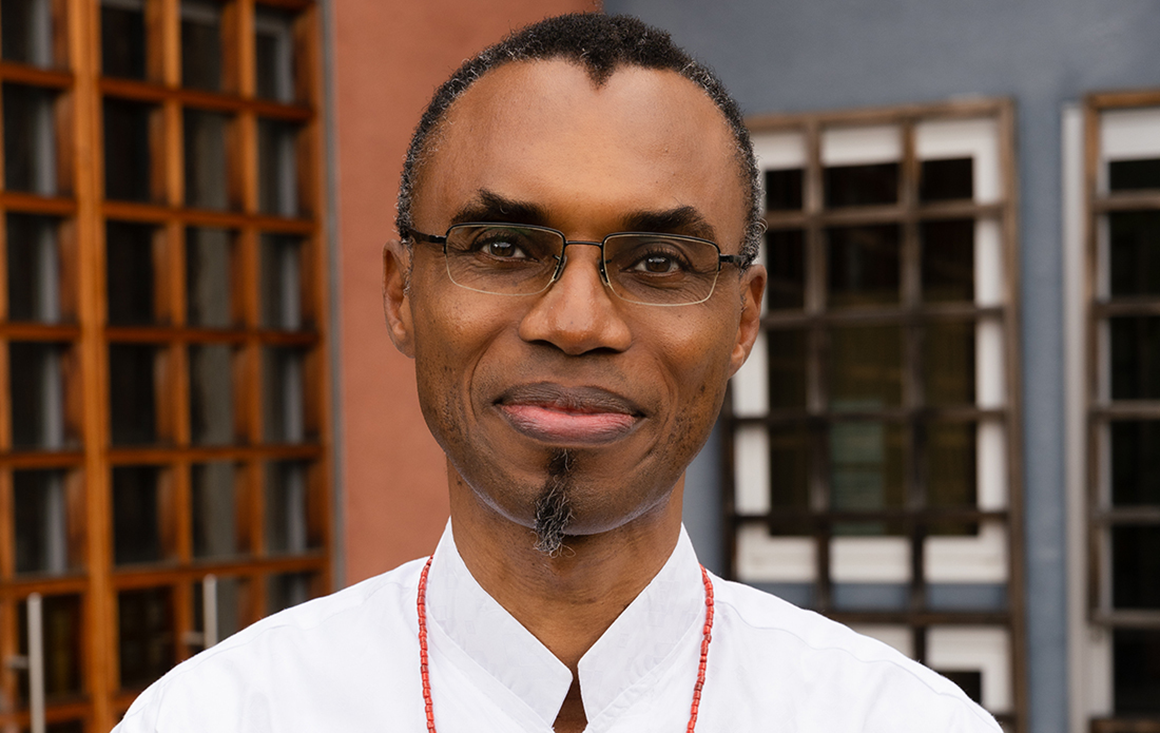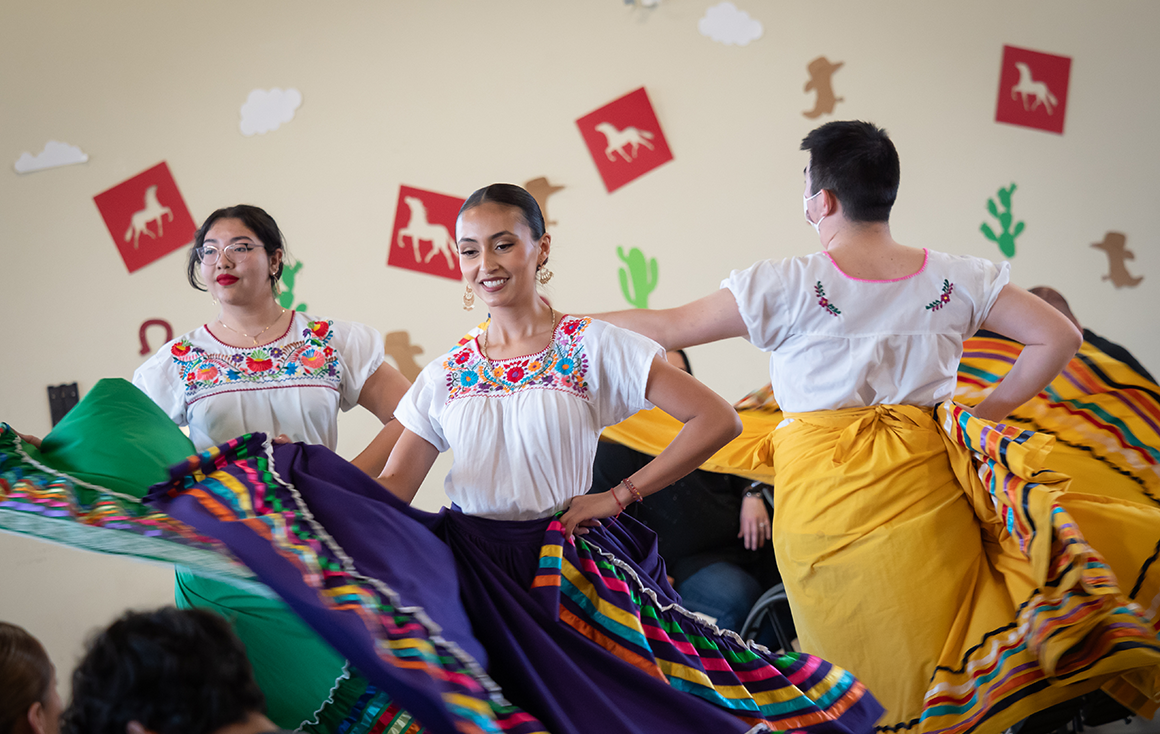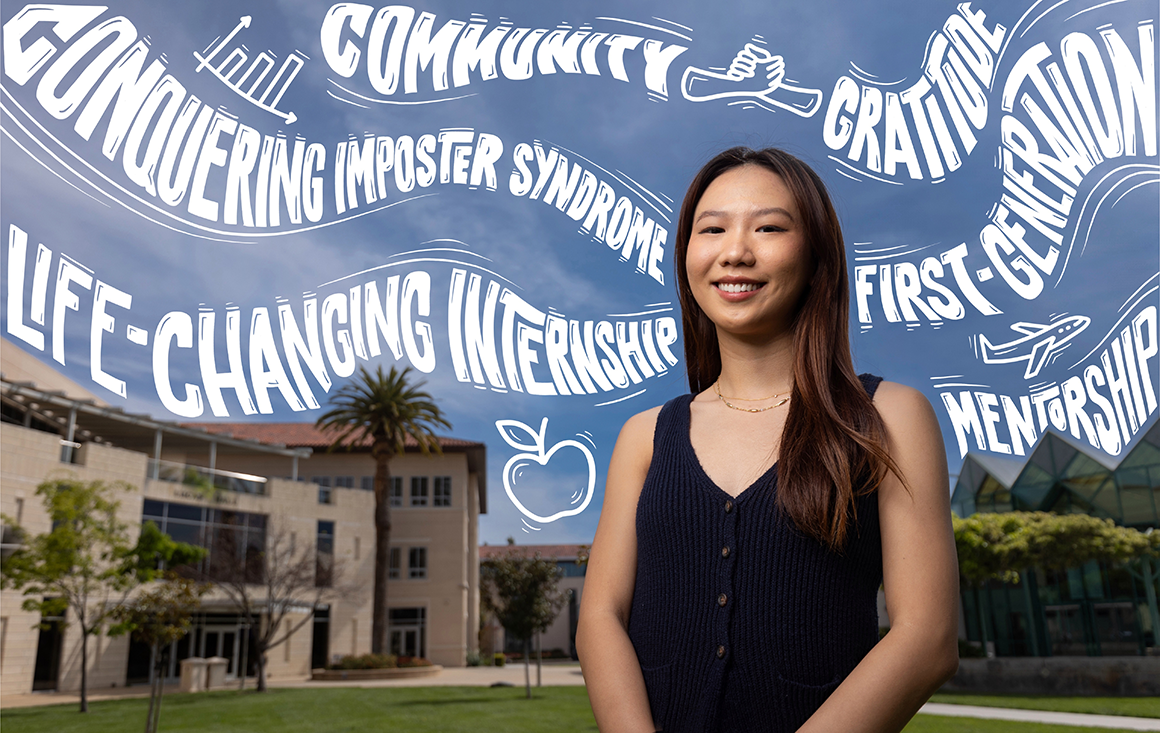Complicating the Malcolm and Martin Binary
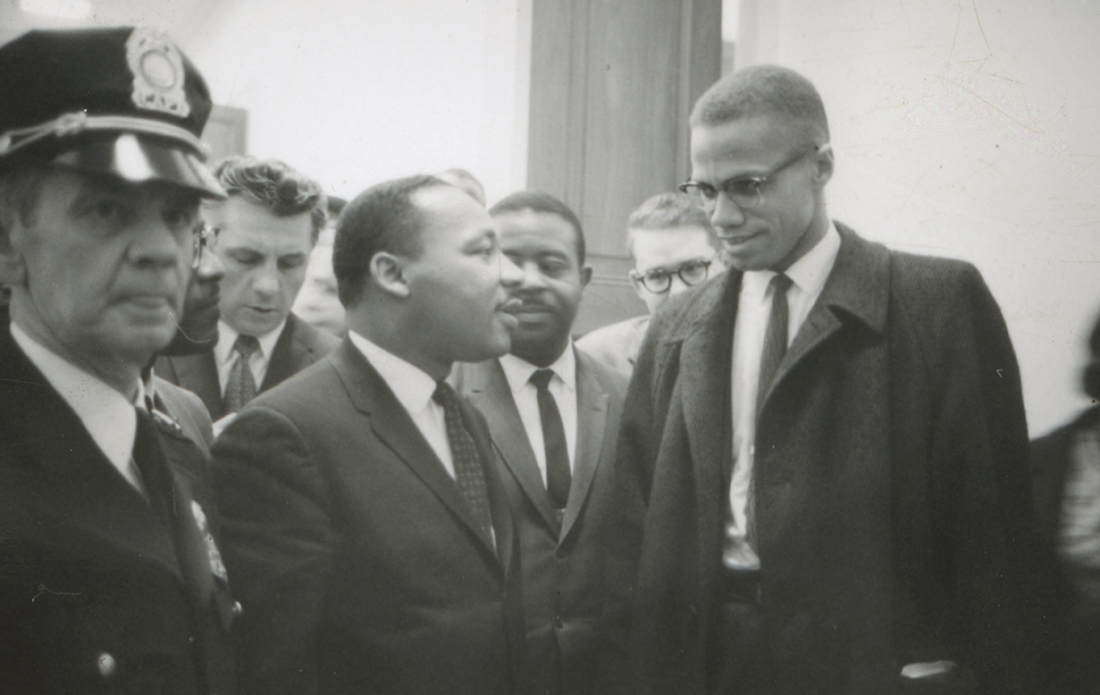
One of the first questions Associate Professor Tony Hazard asks students in his “Malcolm and Martin” class is what they know about the two activists.
It’s a simple exercise that offers a baseline for discussion in class but it also typically uncovers a common foundation each student has. No matter how much the students know about the two men, their understanding is typically rooted in a binary: Martin Luther King Jr. promoted nonviolence and Malcolm X promoted violence.
These students aren’t alone. In the decades since the 1960s, the general public and even some historians have struggled to shake this flawed narrative.
Though King spoke out against the Vietnam War, global white supremacy, and the dangerous impacts of capitalism and imperialism, he’s typically painted as voice of passive resistance rather than active change. Conversely, Malcolm never participated in any violence and traveled the world seeking new points of view, but is viewed as a force of division and violence.
Today is no different. The legacies of King and Malcolm have been mainstreamed into political talking points, sports, movies, and holidays, too often extricating nuance from their complex lives.
“On MLK’s birthday, we have anyone from LeBron to Ivanka Trump tweeting, ‘Thank you, Dr. King.’ The NBA even has a celebration,’” Hazard says. “Then in February rolls around and we say, ‘Okay, what are we gonna see about Malcolm?’ We don't usually see much.”
In 2016, Hazard created the class “Malcolm and Martin” to add depth to the understanding of these two giants of racial justice. The course explores the history of each—from MLK’s days at Morehouse College to Malcolm’s visit to Oxford University where he debated a conservative politician—and contrasts their stories with modern representations in media.
“From day one I ask the students to deconstruct the binary,” Hazard says. “We cover a lot in the class, but complicating that binary is our goal, first and foremost.”
In recognition of Black History Month, we spoke with Hazard to talk about the class and how history often gets it wrong when discussing two of the most important figures during the American Civil Rights Movement.
You designed this course shortly after arriving at Santa Clara. Why was it so important for you to teach this class?
As a historian, the job is to get folks as close to the truth as possible. So that’s part of it. But also, in this historical moment, we’ve seen a rise in the politics of race. We see Dr. King’s memory and his words used and abused by politicians. I wanted to offer the students an honest way to approach the significance of these two people and the broader movement.
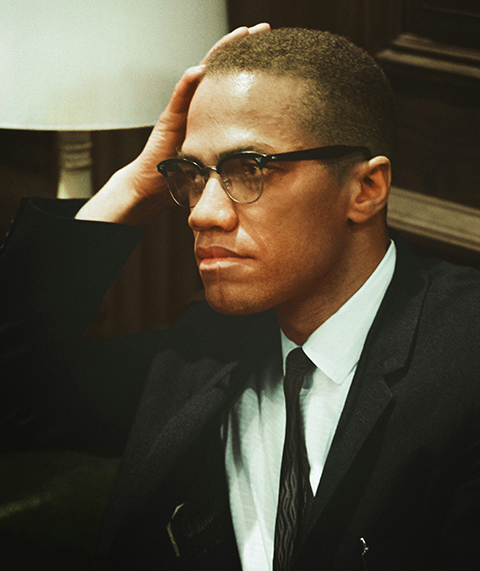
Dr. King and Malcolm X only met once, and just for a few minutes. So this course isn’t about their relationship but instead, it’s about their lives, which means it could go a lot of different directions. How is it structured?
We focus on what led them to the politics that they carried out and executed. We start with historiography: What historians have said, what they’ve written, and what the scholarly literature says about them. I wanted to approach the two as giants, of course, but situate them as not just thinkers and activists in the United States but people who meant so much to the global politics of race. Then we examine how they’re portrayed in media and what these representations teach us. We take a look at Spike Lee's “Malcolm X.” We watch “Selma.” We have a long, serious discussion about Dr. King’s Memorial in Washington, D.C.
We close the course by examining the intellectual and political genealogy and how it connects to today. When we look at Black Lives Matter, it’s important to stop and say, “OK, this comes from someplace.” We look back at how organizations learned from Malcolm and how that led to the rise of Black Power and how we see those influences in contemporary activism.
You mention that the history of these two men is often incomplete. What are some aspects of history the students are surprised to hear about?
That Dr. King was a real person, a flawed person. He started at Morehouse College when he was 15, and he had like a 2.6 GPA. He also wasn't this haloed figure who wanted everyone to come together and hold hands. The beliefs he held privately weren’t always what he chose to share publicly. For example, after his big victories in ’64 and ’65, King began to focus on the anti-war movement. He offered a critique of capitalism and how it's linked to militarism and imperialism. He started discussing white supremacy as a global phenomenon. Now, it wasn’t that Dr. King came to these ideas of how racism works at that moment. Instead, he felt that it was finally time to speak on it publicly.
We also focus a lot on the theme of violence and what violence means in the United States. For example, did Dr. King expect Bull Connor and the Birmingham police to be violent in the spring of 1963? He certainly did. Did Malcolm ever actually physically assault or shoot anyone? The answer is no. So what makes King nonviolent and Malcolm violent in our minds and memory? We need to ask those questions and think deeply about it.
This is a history class, but it also offers a lesson in close reading and media literacy. How have you seen students grow in this course?
One of the things I've seen is an enhanced, sometimes new, willingness to question and interrogate historical material. The production of knowledge is political. So, when we talk about the production of knowledge and power, we have to ask questions about what we’re reading. What choices are historians making? What archives are they going to? Are they citing everything?
One example is Spike Lee's “Malcolm X.” Lee was publicly criticized for relying solely on Malcolm's autobiography. Spike offered a corrective, and said, “No, I interviewed hundreds of people.” Asking those questions about how knowledge is produced makes students more mindful readers. This is especially important when we consider battles over education in places like Florida and Texas. Students leave this class understanding why those battles are so important.
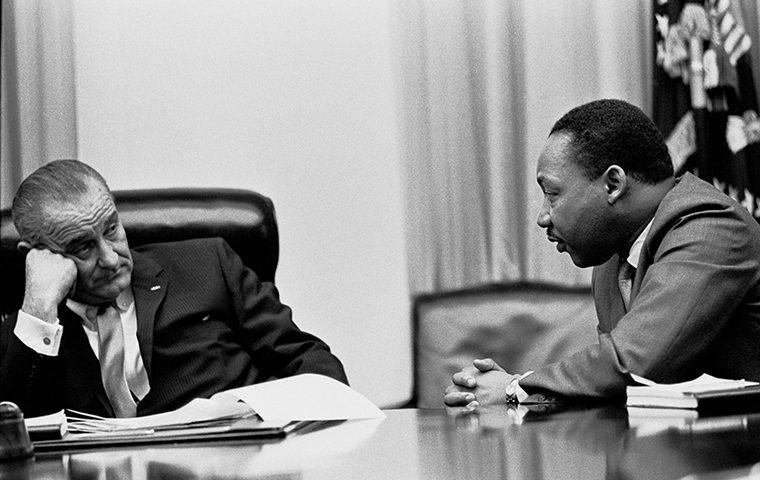
President Lyndon B. Johnson and Martin Luther King Jr.
This class is named “Malcolm and Martin,” but you also highlight many of the overlooked civil rights figures who worked alongside these two men. Why is it important to tell their stories, too?
There is a history, a lineage of activism involving poor and working-class people. When we're taught about the Montgomery bus boycott, all we hear about is Dr. King. But Dr. King had just moved to Montgomery. Many folks didn't know him. He was hand-picked by local activists to be the face. So it was poor and working-class Black people who organized the boycott and carried it out, who walked to work for over a year and put their livelihoods on the line. It's important to show these movements happen because of the people.
For Malcolm, we discuss in class the many influences that helped shape him. For example, the young people who pushed him to think more seriously and deeply about Third World Liberation. We also talk about members of the Student Nonviolent Coordinating Committee (SNCC). When Malcolm visited Oxford University in 1964, he spent so much time listening to Black and brown students who lived under British colonialism. These students were now at one of the most prestigious universities on the planet studying and learning how to fight that system. All these people make Malcolm's story more interesting and more full.
Much of the activism discussed during the Civil Rights Movement feels very local and grassroots, but it had a global lens, too, right?
Definitely. Coming out of World War II, we have the global powers, the imperial powers, the colonial powers, there's the founding of the United Nations. There was also a push on a global stage to write the Universal Declaration of Human Rights, which was adopted by the United Nations General Assembly in 1948. Meanwhile, Britain and France are fighting like hell to maintain empires and the U.S. is fighting like hell to maintain Jim Crow.
This is an essential historical moment for activists. They realized this was an opening up of political space. We all agree that fighting Germany was necessary to defeat antisemitism and necessary to save the planet. So what about your racism at home? We just fought against Hitler while having a segregated military. How does this look?
What are some of your favorite readings or moments in this class?
That’s hard to say. One of the cool aspects of designing a class is you typically love all of it. But I’d say one of my favorite moments is when we finish reading Stephen Tuck’s book, “The Night Malcolm X Spoke at the Oxford Union.” The book is all about Malcolm’s journey, from his childhood to his travels, and it ends with a close reading of the debate at Oxford. It's always so powerful for me because students exude this energy of kind of embracing Malcolm. He was a person. He was human. He welcomed learning from everyone. He was willing to rethink his politics and expand his understanding. This is so powerful for me because I know, professionally and personally, how Malcolm has been demonized for so long. When I see students get closer to Malcolm, I just love that.
Seeking answers to the most timely and important social justice issues, Ethnic Studies empowers every student with a vital understanding of their changing world.
